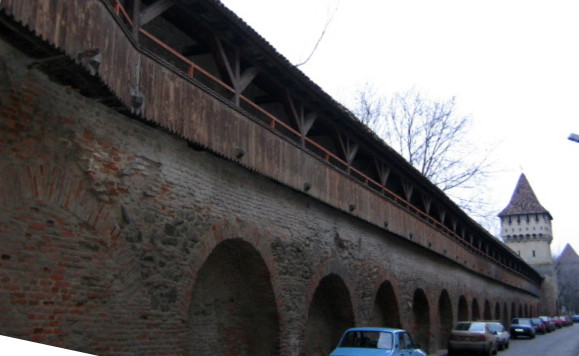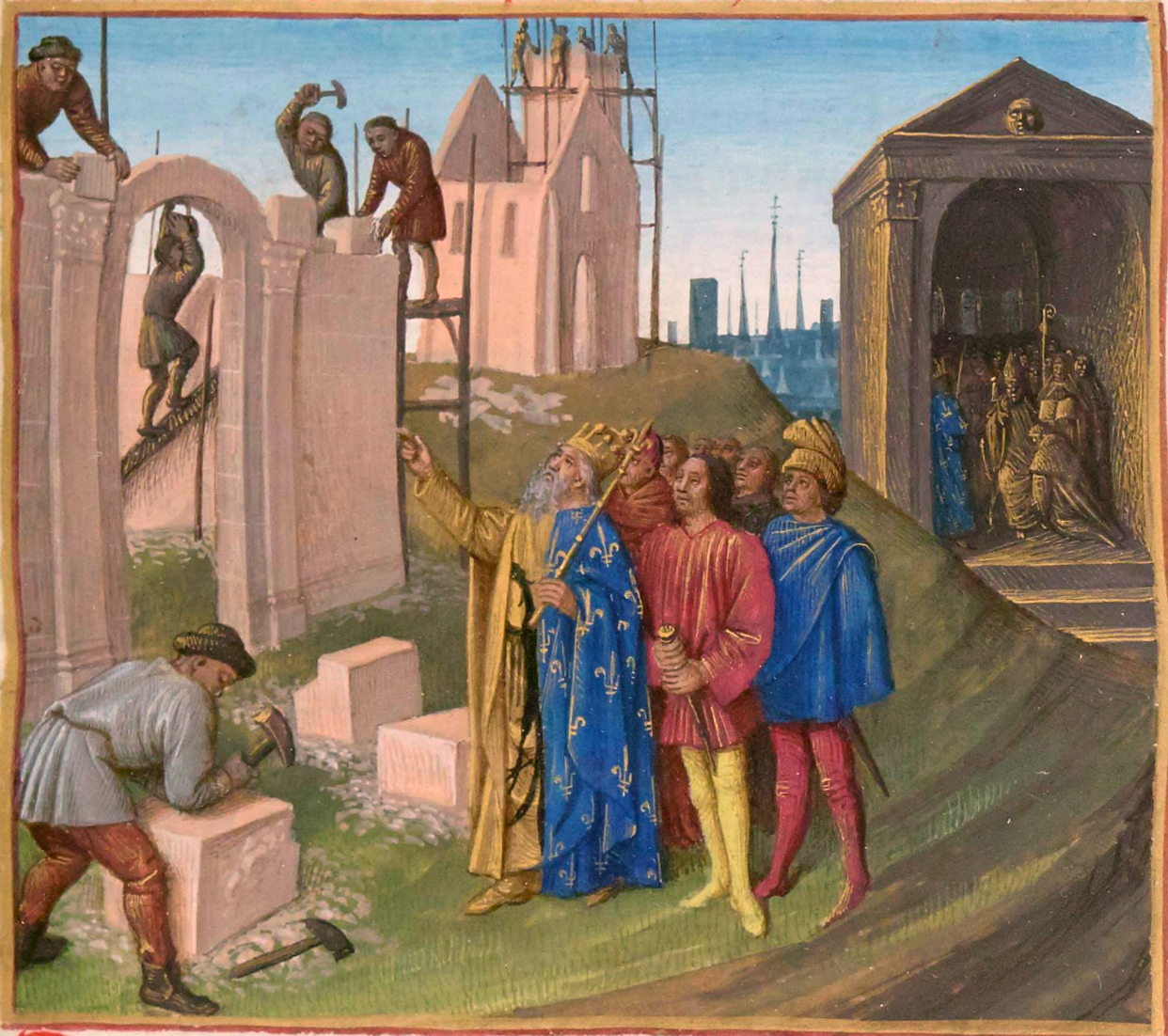|
Ioan Vlădea
Ioan Vlădea (24 October 1907, Râșnov, 24 November 1976, Timișoara) was a Romanians, Romanian engineer from Industria Aeronautică Română, IAR Brașov, who developed the Gas compressor, compressor of airplane, plane engine IAR 80. After World War II he served as professor at Polytechnic University of Timișoara. He is considered the founder of Timișoara school of thermal engineering. Early years and education He was born in Râșnov, as the only son among the five children of Ioan and Elena Vlădea, a poor peasant family.De Sabata, p. 238 He attended the Facultatea de Electromecanică of Universitatea Politehnica of Timișoara, and graduated in 1931. He had as professors Victor Vâlcovici, Valeriu Alaci, Plautius Andronescu, Pompiliu Nicolau, Victor Vlad and Marin Bănărescu.De Sabata, p. 239 On 23 February 1931 received his engineering diploma titled ''Alimentarea cu energie electrică a orașului Brașov'' (Power supply of Brașov city), under the guidance of Dimitri ... [...More Info...] [...Related Items...] OR: [Wikipedia] [Google] [Baidu] |
Râșnov
Râșnov (; ; ; Transylvanian Saxon dialect: ''Ruusenåå''; Latin: ''Rosnovia'') is a town in Brașov County, Transylvania, Romania with a population of 15,920 as of 2021. It is located at about southwest of the city of Brașov and about the same distance from Bran, on DN73, a road that links Wallachia and Transylvania. History The Roman fort of Cumidava was discovered in 1856 near the town. The Râșnov Fortress was first built as a castle by the Teutonic Knights in the years 1211–1225. Râșnov was mentioned for the first time in 1331 as ''Rosnou'' and again in 1388 as ''villa Rosarum''. While the village was razed many times in its history by Tatars, Turks, and Wallachians, the fortress was conquered only once, in 1612, by Gabriel Báthory. Legend of the fortress well There is a legend attached to Râșnov Fortress. During a particularly long siege of the fortress, the citizens of Râșnov were concerned about the lack of available fresh drinking water. Two Turki ... [...More Info...] [...Related Items...] OR: [Wikipedia] [Google] [Baidu] |
Pompiliu Nicolau
Pompiliu is a Romanian masculine given name that may refer to: *Pompiliu Constantinescu *Pompiliu Eliade *Pompiliu Stoica *Pompiliu Ștefu Pompiliu Ștefu (August 10, 1910 – March 28, 1942) was a Romanian typographer, communist activist and anti-fascist militant executed by the Nazi-aligned authorities during World War II along with a fellow militant, the socialist Nicolae Mo ... {{Disambig Romanian masculine given names Masculine given names ... [...More Info...] [...Related Items...] OR: [Wikipedia] [Google] [Baidu] |
Gheorghe Buzdugan (inginer)
Gheorghe V. Buzdugan (February 10, 1867 – October 7, 1929) was a Romanian jurist and politician. Born in Focșani, Buzdugan studied law at the University of Bucharest, after which he served as a judge. Assigned to Piatra Neamț in early 1892, he was transferred to Râmnicu Sărat late that year. He later moved to Galați, serving until 1900, when he was sent to Dorohoi. He also worked in Brăila. He reached Bucharest in 1902, joining the appeals court in 1905, and the High Court of Cassation and Justice in 1910. He became section president there in 1919, and was overall president from 1924 to 1927. He resigned from the magistracy in order to become a member of the regency (alongside Prince Nicholas and Patriarch Miron Cristea) acting on behalf of the minor King Michael. Elected an honorary member of the Romanian Academy in 1929, he died the same year, being replaced by . After lying in state at the Romanian Athenaeum, Buzdugan was buried in the family crypt at Faraoani, Bac ... [...More Info...] [...Related Items...] OR: [Wikipedia] [Google] [Baidu] |
Academia Română
The Romanian Academy ( ) is a cultural forum founded in Bucharest, Romania, in 1866. It covers the scientific, artistic and literary domains. The academy has 181 active members who are elected for life. According to its bylaws, the academy's main goals are the cultivation of Romanian language and Romanian literature, the study of the national history of Romania and research into major scientific domains. Some of the academy's fundamental projects are the Romanian language dictionary ('' Dicționarul explicativ al limbii române''), the dictionary of Romanian literature, and the treatise on the history of the Romanian people. History On the initiative of C. A. Rosetti, the Academy was founded on April 1, 1866, as ''Societatea Literară Română''. The founding members were illustrious members of the Romanian society of the age. The name changed to ''Societatea Academică Romînă'' in 1867, and finally to ''Academia Română'' in 1879, during the reign of Carol I. The foundin ... [...More Info...] [...Related Items...] OR: [Wikipedia] [Google] [Baidu] |
Emeritus
''Emeritus/Emerita'' () is an honorary title granted to someone who retires from a position of distinction, most commonly an academic faculty position, but is allowed to continue using the previous title, as in "professor emeritus". In some cases, the term is conferred automatically upon all persons who retire at a given rank, but in others, it remains a mark of distinguished performance (usually in the area of research) awarded selectively on retirement. It is also used when a person of distinction in a profession retires or hands over the position, enabling their former rank to be retained in their title. The term ''emeritus'' does not necessarily signify that a person has relinquished all the duties of their former position, and they may continue to exercise some of them. In descriptions of deceased professors emeriti listed at U.S. universities, the title ''emeritus'' is replaced by an indication of the years of their appointments, except in obituaries, where it may be us ... [...More Info...] [...Related Items...] OR: [Wikipedia] [Google] [Baidu] |
Propeller (aircraft)
In aeronautics, an aircraft propeller, also called an airscrew,Beaumont, R.A.; ''Aeronautical Engineering'', Odhams, 1942, Chapter 13, "Airscrews". converts rotary motion from an engine or other power source into a swirling slipstream which pushes the propeller forwards or backwards. It comprises a rotating power-driven hub, to which are attached several radial airfoil-section blades such that the whole assembly rotates about a longitudinal axis. The blade pitch may be fixed, manually variable to a few set positions, or of the automatically variable "constant-speed" type. The propeller attaches to the power source's driveshaft either directly or through reduction gearing. Propellers can be made from wood, metal or composite materials. Propellers are most suitable for use at subsonic airspeeds generally below about , although supersonic speeds were achieved in the McDonnell XF-88B experimental propeller-equipped aircraft. Supersonic tip-speeds are used in some aircraft like the ... [...More Info...] [...Related Items...] OR: [Wikipedia] [Google] [Baidu] |
Elie Carafoli
Elie Carafoli (September 15, 1901, Veria, Salonica Vilayet, Ottoman Empire–October 24, 1983, Bucharest, Romania) was an accomplished Romanian engineer and aircraft designer. He is considered a pioneering contributor to the field of Aerodynamics. Biography First years, education Carafoli was of Aromanians, Aromanian descent. In 1915, he left Greece for Bitola, and then Bucharest, where he studied at Gheorghe Lazăr National College (Bucharest), Gheorghe Lazăr High School. In 1919 he entered University Politehnica of Bucharest, graduating with a degree in electrical engineering. He pursued his studies at the University of Paris, while also working at the Institut aérotechnique in Saint-Cyr-l'École, France. He obtained a Ph.D. in 1928, with a thesis entitled ''Contribution to the theory of aerodynamic lift''. Activity in Romania In 1928, Carafoli returned to Bucharest, where he joined the faculty at the Polytechnic University of Bucharest, Polytechnic University, and fo ... [...More Info...] [...Related Items...] OR: [Wikipedia] [Google] [Baidu] |
Sibiu
Sibiu ( , , , Hungarian: ''Nagyszeben'', , Transylvanian Saxon: ''Härmeschtat'' or ''Hermestatt'') is a city in central Romania, situated in the historical region of Transylvania. Located some north-west of Bucharest, the city straddles the Cibin River, a tributary of the Olt River. Now the seat of Sibiu County, between 1692 and 1791 and 1849–65 Sibiu was the capital of the Principality of Transylvania. Until 1876, the Hecht hause in Sibiu served as the seat of the Transylvanian Saxon University. Nicknamed ''The Town with Eyes'' for the eyebrow dormers on many old buildings, the town is a popular tourist destination. It is known for its culture, history, cuisine, and architecture. In 2004, its historical center was added to the tentative list of UNESCO World Heritage Sites. Sibiu was subsequently designated the European Capital of Culture in 2007, along with Luxembourg City. One year later, it was ranked "Europe's 8th-most idyllic place to live" by ''Forbes''. Sibi ... [...More Info...] [...Related Items...] OR: [Wikipedia] [Google] [Baidu] |
Köln
Cologne ( ; ; ) is the largest city of the States of Germany, German state of North Rhine-Westphalia and the List of cities in Germany by population, fourth-most populous city of Germany with nearly 1.1 million inhabitants in the city proper and over 3.1 million people in the Cologne Bonn Region, Cologne Bonn urban region. Cologne is also part of the Rhine-Ruhr metropolitan region, the List of EU metropolitan regions by GDP#2021 ranking of top four German metropolitan regions, second biggest metropolitan region by GDP in the European Union. Centered on the left bank of the Rhine, left (west) bank of the Rhine, Cologne is located on the River Rhine (Lower Rhine), about southeast of the North Rhine-Westphalia state capital Düsseldorf and northwest of Bonn, the former capital of West Germany. The city's medieval Cologne Cathedral () was the History of the world's tallest buildings#Churches and cathedrals: Tallest buildings between the 13th and 20th century, world's talles ... [...More Info...] [...Related Items...] OR: [Wikipedia] [Google] [Baidu] |
Posen
Posen may refer to: Places Europe * Poznań (German: ''Posen''), city in Poland * Grand Duchy of Posen, autonomous province of Prussia, 1815–1848 * Province of Posen, Prussian province, 1848–1918 * Posen (region), the south-western part of the Province of Posen * Posen-West Prussia, German province, 1922–1938 * Reichsgau Posen, occupied in 1939, annexed and directly incorporated into the German Reich United States * Posen, Illinois, a village * Posen, Washington County, Illinois, an unincorporated community * Posen, Michigan Posen is a village in Presque Isle County of the U.S. state of Michigan. The population was 270 at the 2020 census. The village is in Posen Township. Posen has historically had a strong Polish background. At one point, 78.8% of its inhabita ... * Posen Township, Michigan * Posen Township, Minnesota Other uses * Posen (surname) * SMS ''Posen'', a German dreadnaught, 1908–1922 See also * Posner (other) * Pozen (disambiguation ... [...More Info...] [...Related Items...] OR: [Wikipedia] [Google] [Baidu] |
Aachen
Aachen is the List of cities in North Rhine-Westphalia by population, 13th-largest city in North Rhine-Westphalia and the List of cities in Germany by population, 27th-largest city of Germany, with around 261,000 inhabitants. Aachen is located at the northern foothills of the High Fens and the Eifel Mountains. It sits on the Wurm (Rur), Wurm River, a tributary of the Rur (river), Rur, and together with Mönchengladbach, it is the only larger German city in the drainage basin of the Meuse. It is the westernmost larger city in Germany, lying approximately west of Cologne and Bonn, directly bordering Belgium in the southwest, and the Netherlands in the northwest. The city lies in the Meuse–Rhine Euroregion and is the seat of the Aachen (district), district of Aachen ''(Städteregion Aachen)''. The once Celts, Celtic settlement was equipped with several in the course of colonization by Roman people, Roman pioneers settling at the warm Aachen thermal springs around the 1st cen ... [...More Info...] [...Related Items...] OR: [Wikipedia] [Google] [Baidu] |



